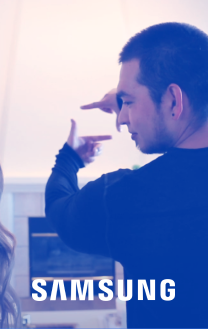Warning: This article contains opinionated statements, that may frustrate Bill Gates fan boys.
Chrome, Firefox, Safari, Opera…Internet Explorer.
I could almost breakout in song. “Which of these things is not like the other…”
Unless you have great grandchildren or are completely ignorant to tech trends, you are probably familiar with the reputation that Internet Explorer has. Once the undisputed way to surf the net, good ol’ IE is quickly becoming something that more closely resembles Netscape than a browser that’s legitimately competitive in today’s landscape. (We wouldn’t be surprised if the IE legacy dies with Spartan?)

So, it’s not the most “hip” browser. Can’t they just rest in the assurance that it comes installed on one of the world’s most well-known operating systems and be content in serving up aol.com email composing for grandparents for years to come? Not quite. The world of modern internet browsing isn’t just a popularity competition — other factors can be critically detrimental.
Like Google disowning you.
Last year, Google announced that it would (and it did) cease Google Apps support of Internet Explorer 8 (which only launched in 2009). Apps includes Google’s flagship products: Gmail, Hangouts, Calendar, Google+, Drive, Docs, Sheets, Forms, Slides, etc…basically anything you want to do with your Google account, aside from searching for “Cat Memes.”

That was followed shortly by Google cutting older IE support for their Analytics platform too. Then, as of an announcement at the end of 2014, they promptly did it again with IE9. “But there’s a new version that they do support!” you cry. Yes, but they aren’t the only ones leading this charge. Microsoft itself has chosen to disown it’s XP operating system. These major brands acknowledging what everyone else knows (and killing software support accordingly) is important and is a big time lesson to those of us in software design and development.
Legacy OS & Browsers: Our Responsibility & What It Means for Clients
If you work with clients often, you’ve likely heard something like:
“My app must be available to everyone! On every phone! On every platform! It must!”
To those who don’t work in an industry where platform and device support is a constant consideration, it makes perfect sense: If 10% of people download my project, then 10% of all available platforms is going to be better than 10% of a few of them. It’s an extremely high level point of view — and it’s fair.
That’s when it comes to us. Being honest about the real costs and the realities of support is fair too. Custom software projects are, in their most simple form, investments. Like any other investments,there are good and there are bad. Just because investing in all the stocks may garner a few profits come closing time, that doesn’t mean it’s the best way to invest.
User Experience (UX) & The “Android Complex”
Whether you’re #TeamiOS or #TeamAndroid — let’s put down our “fan boy” hats for a moment and understand this purely from a conceptual standpoint: As you know, there are far more devices available that operate on Android’s platform, than iOS. There are countless reasons for this, that include both pros and cons.
Put on your designer hat. Rational thought would explain that, as an app developer, the more devices, dimensions, platform versions, etc…you choose to support, the harder it is (if we’re truly honest) to maintain a controlled, beautiful, consistent and ideal user experience. Will the best user experience on a smaller Android device really translate to exactly how you would have designed the app for a much larger screen? Can the UX be good — even great? Sure! But, at the end of the day, not perfect.
The goal for any software: Target your users’ needs and provide the best possible experience.
Stand with Savvy Support
As we see major names like Google begin to cut support for legacy operating systems and browsers, it’s our responsibility as software designers and developers (and often times the sole ‘tech’ experts for our clients) to be honest with our own support process too. Software support is a life cycle — and one that, if not respected, can cost our clients a lot of time and money — not to mention degrade the end user experience, as we’ve discussed.
Killing off support is a healthy part of the software process. It allows software to grow and improve over time, alongside hardware and UX improvements.
Sure, there will be some cases where a client will require support for a specific (and potentially dated) system. This could be due to internal networking, corporate systems, etc…but for the majority of public-facing projects it’s important to encourage support that is current and forward-thinking. After all, what is “current” today, is only going to be more dated tomorrow.

“But…but!”
Will clients potentially lose a few users who may not know how to update their OS, or do so for some self-righteous reason? (We’ve all heard the “I let them work the bugs out before I update” guys.) Sure, but consider in how many cases the cost of adding that support will ever be recouped by the client from those few users. Rarely, if ever.
If our goal is to create amazing, functional software and meaningful trusting relationships with our clients — as their software experts, we have a responsibility to ask questions regarding support and lead them to this realization.
At Gravity Jack, we stand with the giants like Google and fully support the process of software phasing to ensure that current software provides the best possible user experience, at a cost and dedication level that works for our client and encourages trust.
Be sure to let us know your thoughts on Facebook and Twitter!





